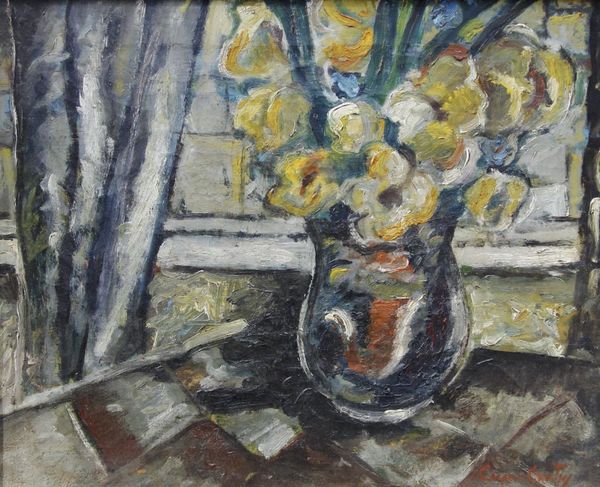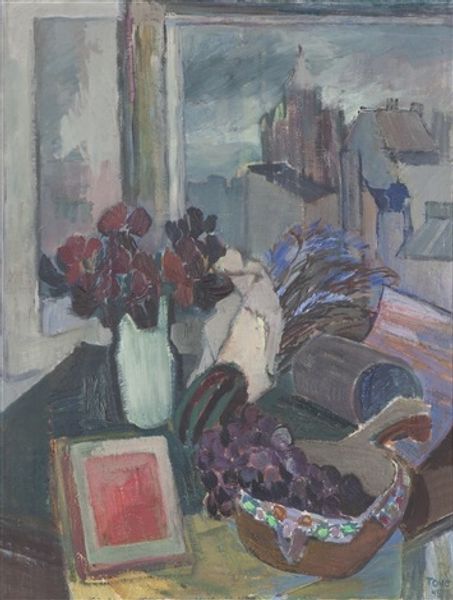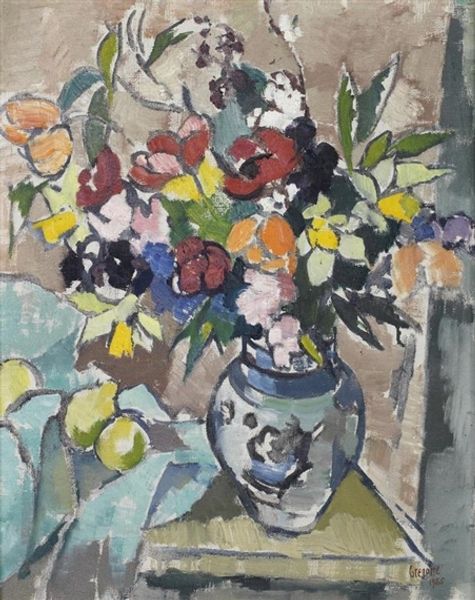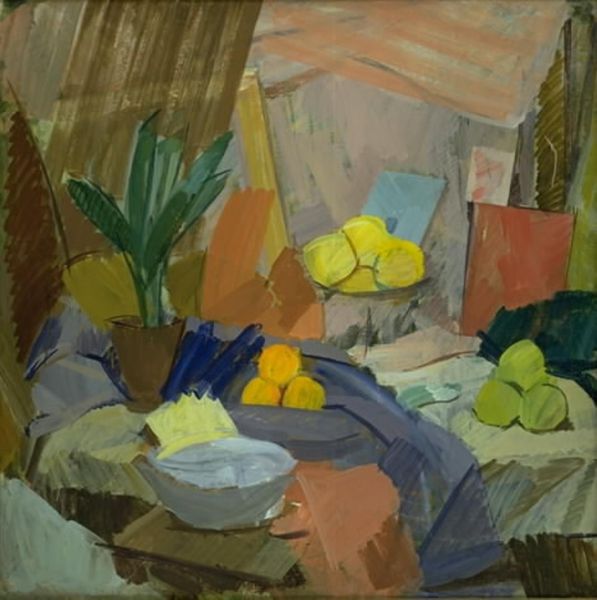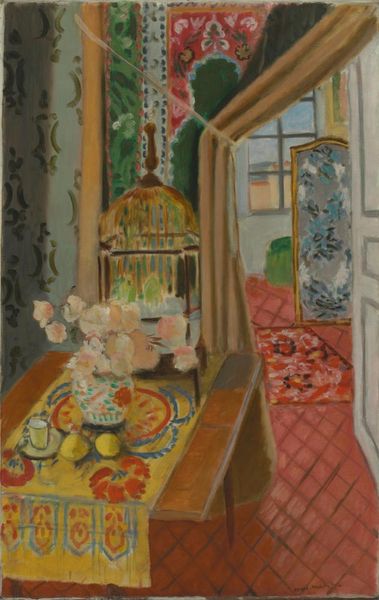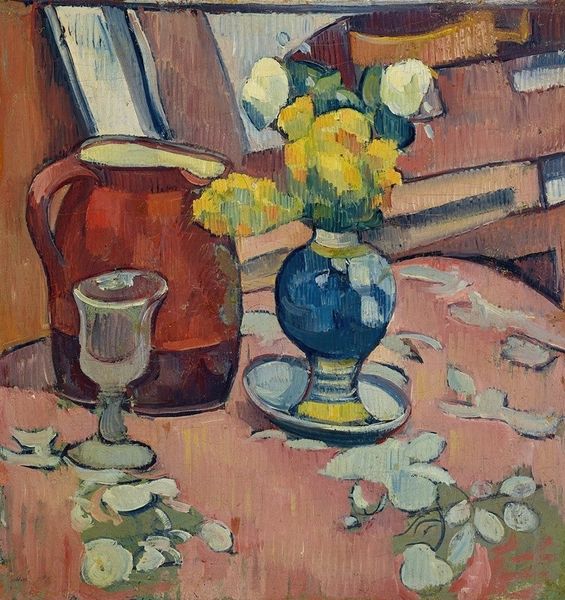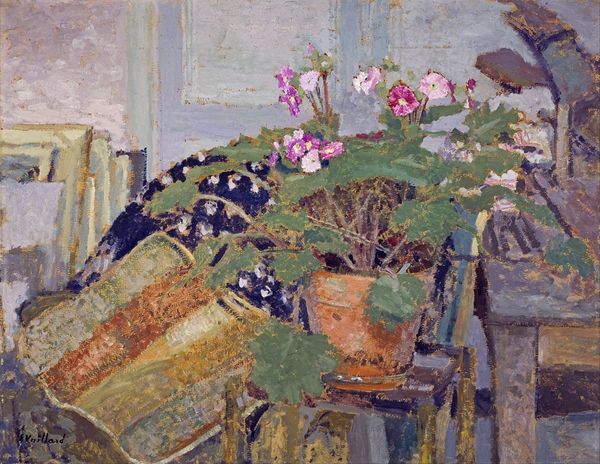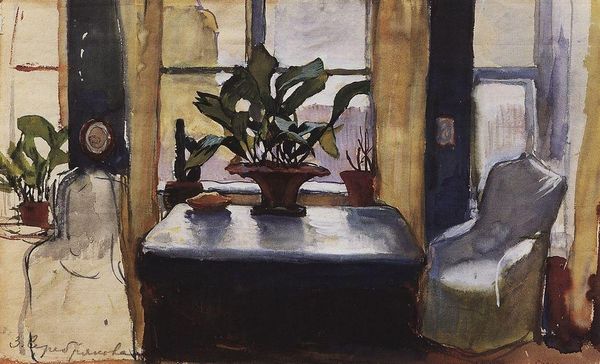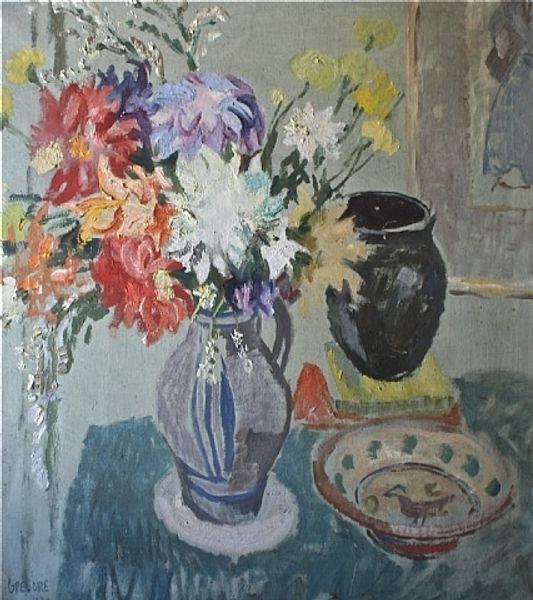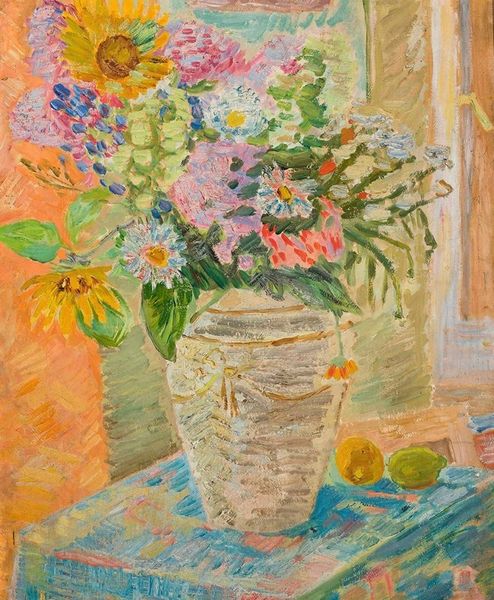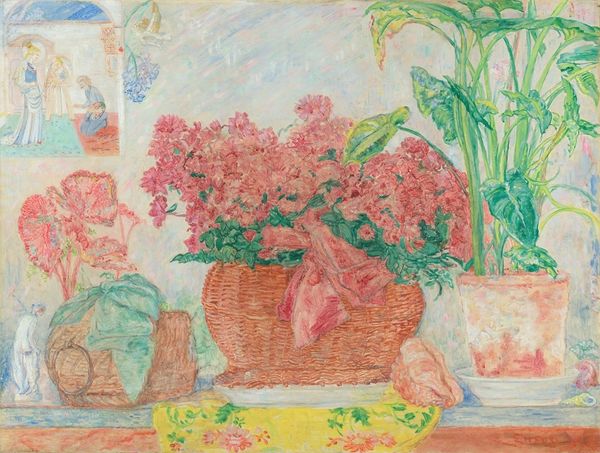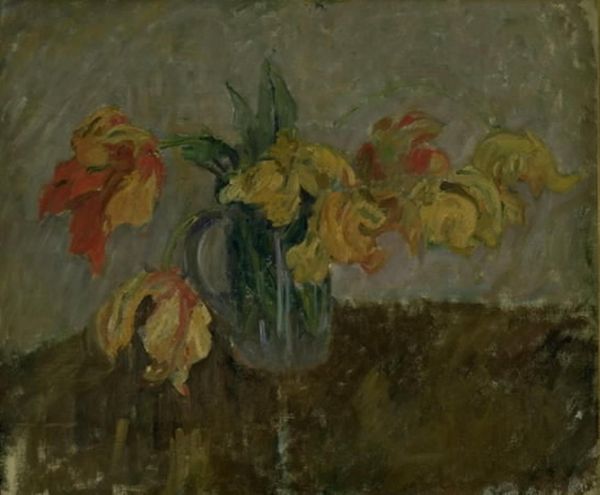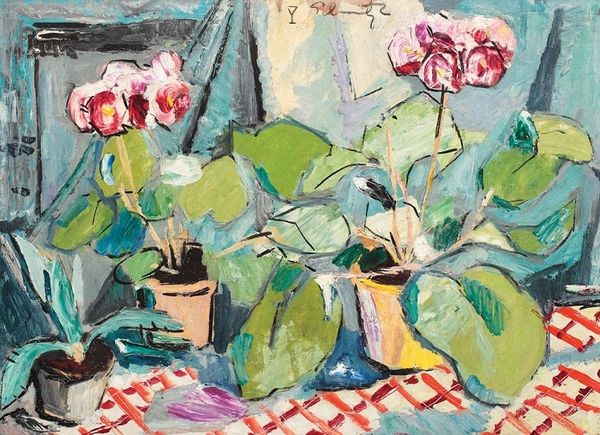
Dimensions: 100 cm (height) x 66.5 cm (width) (Netto)
Curator: Welcome. Today, we’re looking at “Daffodils in a Window” by Axel Bentzen, painted in 1934. Editor: It has such a serene, almost domestic feel, doesn't it? The cool blues and greens contrast beautifully with the bright yellow daffodils. It's intimate, like a private moment captured on canvas. Curator: Bentzen was part of a generation of Danish painters who explored impressionism, and this piece is a fine example. Notice how he captures light, particularly the way it streams in through the window, illuminating the flowers and the nearby rooftops. It reminds me of works by other Danish artists from this period, which are often depictions of cozy bourgeois interior and exterior scenes. Editor: Absolutely. And that window acts as a frame within a frame, mediating between the private interior and the world outside. The daffodils themselves could symbolize hope or new beginnings. The window placement allows you to bring an outdoor landscape inside, and view life indoors through a pastoral lens. Curator: That’s right, there is almost a blurring of boundaries between inside and outside space in this piece. You get the sense that Bentzen created this oil-on-canvas in the open air – en plein air, as the French say. I can imagine the canvas and paint easel out by an open window during spring. Editor: It also makes me consider the painting's potential political subtext. While seemingly just a pleasant scene, we can examine what that 'pleasant' scene signifies during that era. We must consider the artwork in light of the economic landscape and its representation of middle class comfort during a time of change in the pre-war period. The focus on domestic tranquility and beauty might have been a way of both responding to and subtly resisting the turbulent climate outside. Curator: A point well taken. Museums showcase art through historical narratives. Bentzen’s generation was one influenced both by French painting, and by historical developments across Europe more broadly. Art museums and institutions, then, play a large role in helping a broader public encounter these narratives and historical developments through art. Editor: And that interplay, between what appears personal and what is undeniably political, is precisely where art sparks real conversation. This makes art viewing so powerful and engaging. Curator: Indeed. Hopefully our observations will offer deeper contemplation for the visitor as well. Editor: Exactly, art is a gateway into exploring a wide array of subjects: politics, self expression, societal tensions, and more.
Comments
No comments
Be the first to comment and join the conversation on the ultimate creative platform.
